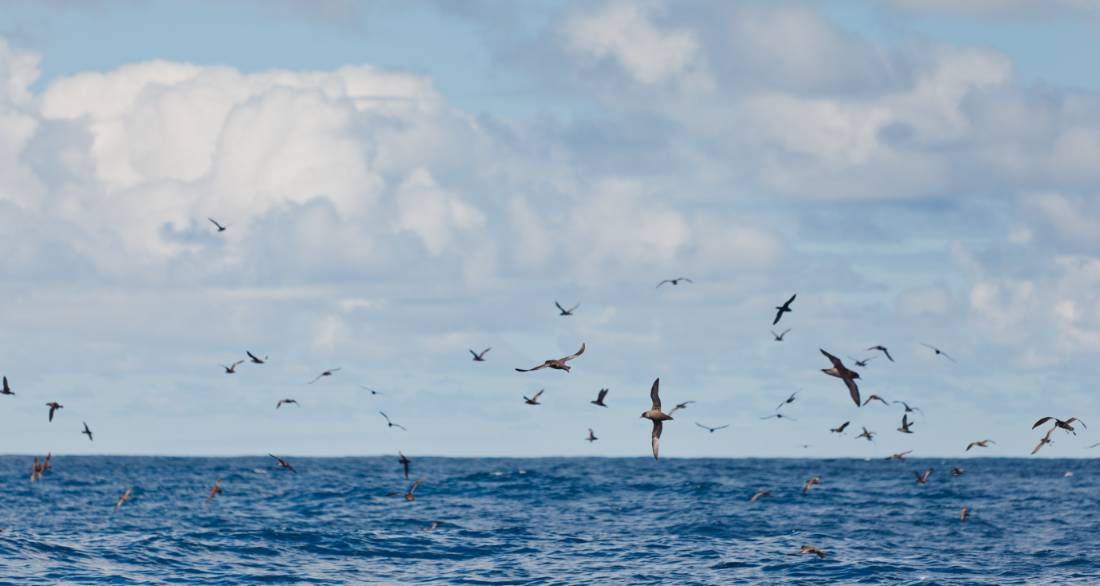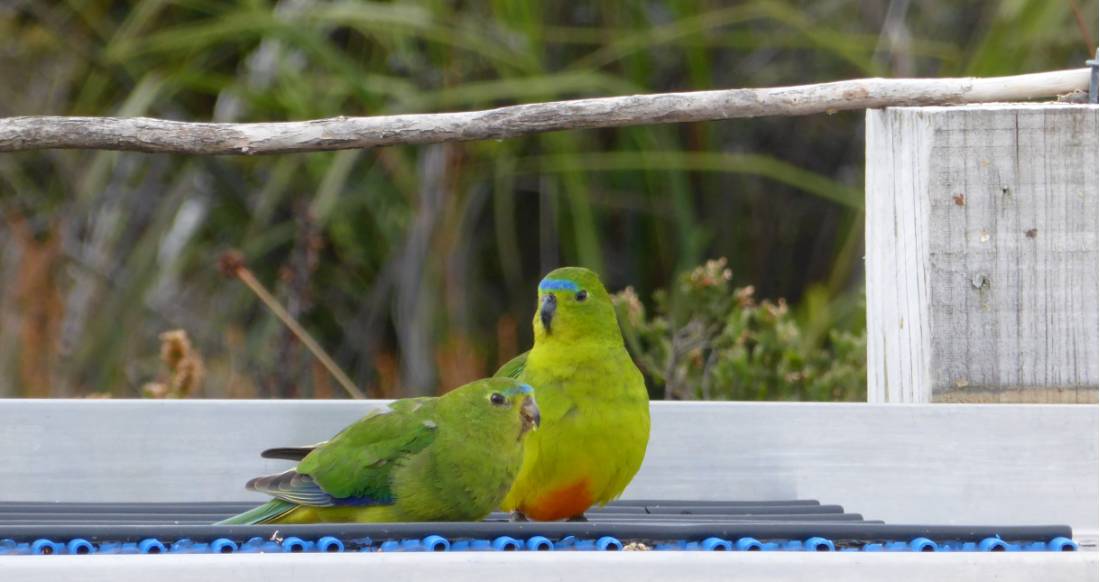Blog home / Top birding spots in Australia: where to go and when
Heading out to discover alluring natural settings drives many of us into wilderness areas – and spotting its animated birdlife adds to the adventure. Whether you're a 'birder' or simply enjoy nature and wildlife viewing, the various bird families and endemic species of Australia make this country a bird watcher's paradise.
Fellow birders probably know about the popular areas at the Daintree Rainforest, Atherton Tablelands and the Iron Ranges of Far North Queensland. We thought to expand your birding 'life list' to regions you may not have considered, whilst giving you the chance to actively explore the beauty of the land Down Under.
This guide showcases noteworthy birdwatching hotspots across Australia and how to best see them. Get ready to add these to your checklist!
Kakadu National Park & Nitmiluk National Park – Northern Territory
What makes it great for birding? Its habitat allow good transition zones for biodiversity – from grasslands to the billabong and tropical forests. There are a number of remote microhabitats throughout the area which some birds, like the White-throated Grasswren, are restricted to and found nowhere else. Other species, like the Gouldian Finch, are nomadic throughout their range making it extra special when you do find them. However, it can be hard to predict where they will be as they follow the seeding grasses they feed on.
Target species: Chestnut-backed Buttonquail, Chestnut-quilled Rock-Pigeon, Northern Rosella, Hooded Parrot, Rainbow Pitta, Great Bowerbird, Black-tailed Treecreeper, White-throated Grasswren, Green-backed Gerygone, Rufous-banded Honeyeater, Sandstone Shrike-Thrush, Silver-backed Butcherbird, Northern Fantail, Paperbark Flycatcher, Buff-sided Robin, Masked Finch, Gouldian Finch, Yellow-rumped Finch and Crimson Finch.
Best season and getting there: The best time of year to go is between May and September. A number of trips in the Top End guide you in true wilderness for a chance to see these wonderful species. Our Kakadu Explorer, Jatbula Trail, Katherine River Canoeing and Kakadu Stone Country Adventure offer beautiful wildlife experiences in NT's tropical paradise.
Bonus stop: Keep an eye out or make a quick pit-stop in Pine Creek to see the Hooded Parrots – it's the best spot to see these birds, who are unlikely to be seen in the national park itself.
Bibbulmun Track & Margaret River Region – Western Australia
What makes it great for birding? Coastal Heath, ancient Karri forest, grasslands and rocky outcroppings make for interesting landscapes and habitats to explore. There have been some great conservation efforts to the important habitats in this region, such as in Albany, which is one of the only places to find the Western Bristlebird. In addition to being a great birding region, you can combine your love of nature with great food and outstanding wine to make a great day of birdwatching even better.
Target species: Baudin’s Black Cockatoo, Carnaby’s Black Cockatoo, Western Corella, Red-capped Parrot, Regent Parrot, Western Rosella, Western Bristlebird, Rufous Treecreeper, Red-winged Fairywren, Western Thornbill, Western Gerygone, Gilbert’s Honeyeater, Western Spinebill, Western Wattlebird, White-breasted Robin and Red-eared Firetail.

Best season and getting there: You can see most of the above-listed birds year-round, but springtime (September to October) will provide a chance to see courtships in action. Between September and May, the majority of the flowering trees will be blooming which provides lots of food for the birds making them easier to find.
Some of the trips for this region that offer a chance to see these great species are the Bibbulmun Track Albany to Denmark, Bibbulmun Track Walpole to Denmark, Cape to Cape and Bibbulmun in Luxury, Cape to Cape in Luxury and Munda Biddi Cycling Adventure.
Bonus stop: While in the region, don’t forget to take some time to explore Kings Park in Perth or take the ferry to Rottnest Island for a chance to see extra birdlife.
Tasmania
What makes it great for birding? The isolation of Tasmania has meant that several species have evolved separately from their mainland counterparts into separate species with eccentric colourations and behaviours. Plus, the many pristine and wild areas of the Apple Isle provides plenty of ways to have an adventure while birdwatching, whether it’s rafting, cycling, or trekking.
While you can see most of these species throughout the region, some species have very restricted habitats, like that of the Forty-spotted Pardalote which is restricted to Bruny Island and Maria Island.

One of the biggest conservation efforts for birds in Australia is the Orange-bellied Parrot which breeds down in Tasmania where loss of habitat is its biggest threats. Birdwatching in this area can help with its conservation for reporting numbers and distribution, as well as helping local economies understand the importance of eco-tourism.
Target species: Tasmanian Native-hen, Green Rosella, Orange-bellied Parrot, Tasmanian Thornbill, Tasmanian Scrubwren, Scrubtit, Forty-spotted Pardalote, Yellow-throated Honeyeater, Strong-billed Honeyeater, Yellow Wattlebird, Black Currawong, Forest Raven and Dusky Robin.
Best season and getting there: The best time for birdwatching in Tasmania is during summer (November to March) when it is warm and some of the birds have migrated back from their overwintering territories in mainland Australia. There are a lot of combinations of the different trips we offer down in Tasmania that would enable you to make it a truly great birding trip but are also great if you are travelling with non-birdwatching companions.

The Overland Track and the Walls of Jerusalem are some of the most popular where you camp deep in World Heritage-listed wilderness for an abundance of up-close opportunities with the park's birdlife. Other trips like the Cycle, Kayak and Walk Tasmania, the Great Tasmanian Traverse, Freycinet Circuit Walk, Franklin River and Frenchman’s Cap, Port Davey Track (for the best chance of seeing Orange-bellied Parrots) or the Bruny Island Food, Bike & Hike are other equally fun ways to explore the birds of Tasmania.
West McDonnell Ranges – Northern Territory
What makes it great for birding? Heading to Australia's Red Centre offers highly specialised species which have adapted to the many different microclimates separated by vast areas of arid desert habitat. Many of these outback birds are highly nomadic covering large ranges which can make them a challenge to see.

Other species are highly concentrated within one microhabitat and found nowhere else. With changes to the climate, some of these microclimates are becoming harder to find, so nomadic species like the Princess Parrot have become endangered along with a few other species.
While birding in this region can be challenging, it is definitely rewarding. Plus, you can do your bit by uploading your checklists of birds found to citizen science-based websites to help scientists track these specialised species. Read more about the ecology of Central Australia, home to over 180 unique species of birds.
Target species: Spinifex Pigeon, Dusky Grasswren, Spinifexbird, Rufous-crowned Emu-wren, Princess Parrot, Bourke’s Parrot, Western Bowerbird, White-browed Treecreeper, Redthroat, Slaty-backed Thornbill, Grey-headed Honeyeater, Chiming Wedgebill and Painted Firetail.
Best season and getting there: The best time to visit this region is in the autumn and winter from April to September, so you have access to the remote habitats at comfortable temperatures. There are many comfortable or hardier walks of the Larapinta Trail available, and the more space you cover, the more chances you will have to see more species.
Flinders Ranges – South Australia
What makes it great for birding? The iconic Australian outback scenery of the Flinders Range makes it a novel habitat for wildlife. Many microclimates within this region support species which cannot be found elsewhere, as well as being a large transition area that supports many migratory species. When water reaches this region, you can also make a side trip up to Lake Eyre to experience an amazing spectacle of bird gatherings you won’t see anywhere else.
Target species: Mulga Parrot, Purple-crowned Lorikeet, Short-tailed Grasswren, Redthroat, Chestnut-crowned Babbler, Cinnamon Quail-Thrush and Malleefowl.

Best season and getting there: The best time to birdwatch in the region is between March and October. Heysen Trail and the Flinders Ranges, Arkaba Walk, Remote Northern Flinders Camel Trek and Flinders Ranges to the Murray River are some of the trips that can get you to this remote area to tick off these great species from your life lists.
While the chance to see these species can be high for each of the areas, wildlife viewings can never be guaranteed. However, this list includes the most accessible areas for ideal chances of birdwatching. Happy birding!
Words by fellow birder Nicolas Cary.
Have a favourite birdwatching location? Share them in the comments below.